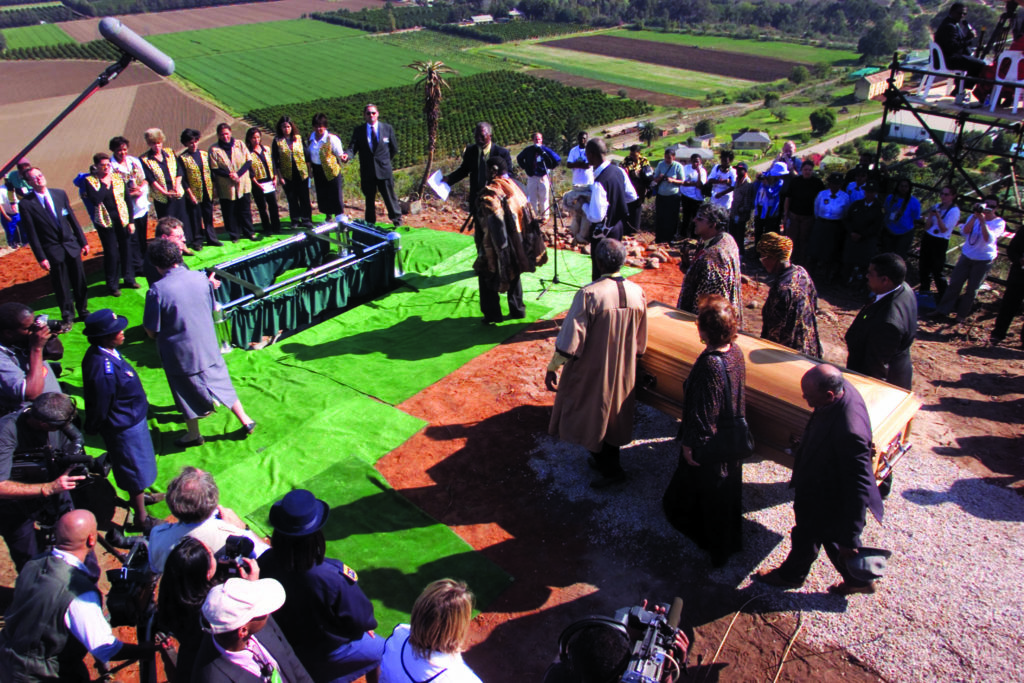It was the saddest moment of my entire existence, not even my mother’s death was as sad as getting Sarah Baartman home,” says Chief Jean Burgess of the Ghonaqua First Peoples, one of the tribes of the Khoikhoi community in South Africa.
Sadness haunted Baartman until the end of a life of misery and exploitation. She was paraded and abused before rich Europeans and went to an early grave.
It took more than a century for her remains to be brought and buried into the red soil of Africa, the land of her birth.
Baartman was born in 1789, at the Gamtoos River Valley, in the Eastern Province of South Africa, into the Ghonaqua sub clan, part of the Khoikhoi.
When she was two, her mother died and her father, a cattle driver, died when she was a teenager.
Loading...
Death followed her young life.
At 16, Baartman’s fiancé was murdered by Dutch colonists. Soon after, she was sold into slavery to a trader, Pieter Willem Cezar, who took her to Cape Town, where she became a domestic servant to his brother, Hendrik. It was during this time that she was given the name ‘Saartjie’, a Dutch diminutive for Sarah, according to South African History Online.
It was here she met William Dunlop, a British ship doctor, who persuaded her to travel to London with him. She signed a contract but couldn’t have known how her large buttocks would be ruthlessly exploited to make a fortune for Dunlop.
She was called by the stage name Hottentot Venus, which means Khoisan sex symbol. She was displayed as a freak, used as a scientific curiosity and kidnapped in a cage that was the life and struggle of the icon.
Five years in a foreign land, after enduring humiliation and exploitation and before her death, Baartman underwent scientific experiments by French scientist Georges Cuvier who wanted to prove she was the link between human and animal. He concluded she was not human yet.
In 1815, at only 25, she died of an unknown illness, thousands of kilometers from home, with no means of getting back.
“Nobody knows the exact date she died because she was surrounded by people who didn’t care about her. Their aim was only to exploit her,” says Burgess.
In life, and in death, she was treated as an exhibit. Her remains were displayed for 159 years after she passed on.
“After her death, a plaster cast was made of her body. Sarah’s brain and genitals were placed in jars which were displayed at the Musée del’Homme, which means Museum of Man, in Paris, until 1974,” says South African History Online.
Sadly, Burgess had to place her remains in a coffin.
“To us, she is a woman who suffered immensely,” says Burgess.
She wore an apron and was mostly half-naked. When asked about Baartman’s clothing, Burgess refuses to discuss it. She says discussing her clothing and body is an insult to her spiritual strength as an Indigenous First Descendent.
Two hundred years later, Baartman is still being talked about, following reports that American singer and Drunk In love hit maker, Beyoncé Knowles, was producing a film on her life, even though this is unlikely to happen.
Jack Devnarain, Chairman of the South African Guild of Actors, says as a producer Beyoncé has the right not only to tell the story, but also to include herself in whatever capacity she sees fit in a production.
But Devnarain says the story of Baartman is a painful episode in South African history and should be about more than creating a showpiece for the skills of an actress intent on earning accolades.
“We believe that any attempt at capturing the character, her treatment as carnival showpiece and as an object of perverse fascination is an endeavor that demands thorough research and a sensitive, respectful approach to the issues and the person,” says Devnarain.
Julie Wells, Head of the Isikhumbuzo Applied History Unit at Rhodes University, in Grahamstown, says a film about Saartjie should be done thoughtfully and sensitively.
“There is a general uneasiness about Beyoncé playing Saartjie’s life. She strikes me as an unlikely person to do justice to the character…there should be an inclusion of local actors in the film,’’ says Wells.
Wells is wary of Americans who wants to play South African icons.
Burgess believes if an American artiste played the role of Baartman, the story would lose its spiritual sensitivity.
“No one has the right to portray Sarah’s life… I would never support another person from another country who wants to tell our stories. It is not theirs to tell. We have local actors who have the understanding, insight and sensitivity to do justice to the role,” says Burgess.
In March 2002, her remains were finally returned to South Africa, her homeland. She was buried on August 9, Women’s Day, at Hankey on the Gamtoos River Valley, in the Eastern Cape, her place of birth.
One of the people who helped bring Baartman’s remains back to South Africa is Diana Ferrus, a writer, poet and storyteller of mixed Khoisan and slave ancestry, who wrote a poem in 1998 in Utrecht, The Netherlands.
“I wrote the poem for her, when I felt home sick and knew she wanted to go home. Her longing to be home, the physical home where she would feel safe and away from the mocking, exploitation and abuse,” says Ferrus.
Ferrus believes Baartman should be made a part of South African history.
“Her body was used to write racial theories that followed us for centuries. She suffered for us,” she says.
“At last she is resting in peace in her mother country, where she belongs,” says Ferrus.
Loading...
